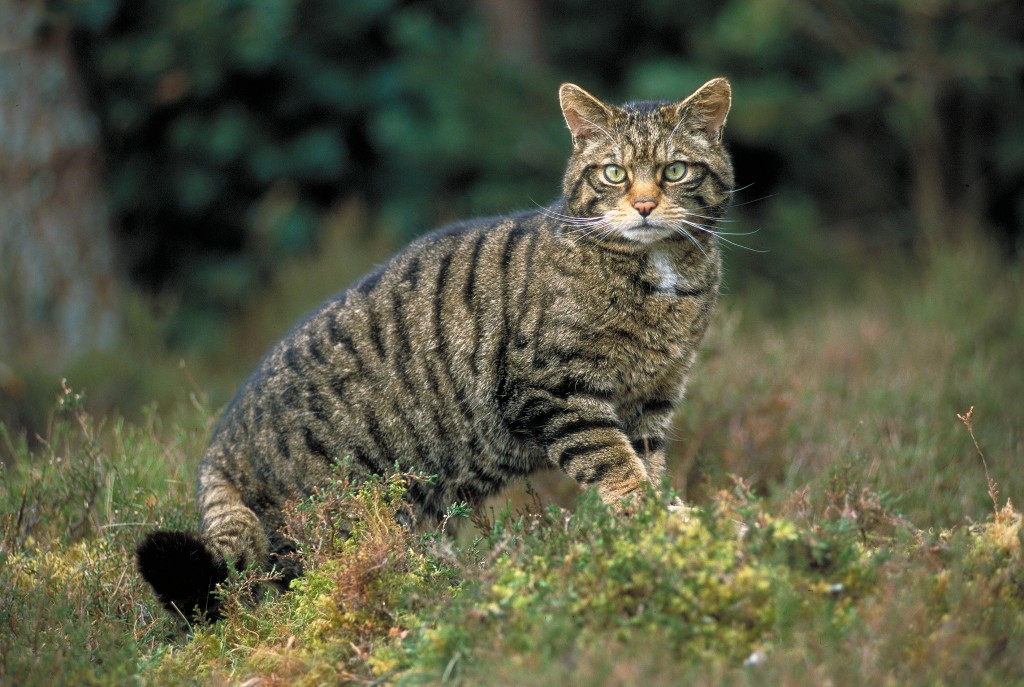Highland Cat Killing and Cat Demons September 2, 2014
Author: Beach Combing | in : Modern , trackbackThere is a long tradition of cats being either pampered by humans or being killed in various ghastly ways. As noted before on this blog – the cat throwing of the Lowlands, for example – cat cruelty was, in the early modern period, institutionalized. Here is one horrific example from the Hebrides. Cat lovers might want to look away at this point. The taghairm (aka tigh ghairm, taighairm, taigheirm, taghairm etc etc) was literally a conjuring and the whole idea seems to have been to learn the future from the dead or to gain favours from devils. This particular report relates to the island of Mull in the early 1600s (the piece quoted here dates to 1824): if you had tried to do this in Surrey at this date then you would have found yourself in SERIOUS trouble with the local authorities, but that’s another story.
The institution was no doubt of pagan origin, and was a sacrifice offered to the Evil Spirit, in return for which the votaries were entitled to demand two boons. The idea entertained of it at the time must have been dreadful, and it is still often quoted for the purpose of terrifying the young and credulous. The sacrifice consisted of living cats roasted on a spit while life remained, and when the animal expired, another was put on in its place. This operation was continued for four days and nights, without tasting food. The Taigherm commenced at midnight between Friday and Saturday, and had not long proceeded, when infernal spirits began to enter the house or barn in which it was performing, in the form of black cats.
Note that skewering a cat on none vital organs and keeping it in place is a challenge in itself: is it even possible? In any case, next begins a game with high stakes. The demons coming in try and distract the magicians. The magicians keep turning the spit. Imagine the noise and the smell…
The first cat [spirit] that entered, after darting a furious look at the operator, said, ‘Lachain Oer, thou son of Neil, that is bad usage of a cat.’ Allan, who superintended as master of the rites, cautioned Lachlan, that whatever he should hear or see, he must continue to turn the spit; and this was done accordingly. The cats continued to enter and the yells of the cat on the spit, joined by the rest, were tremendous. A cat of enormous size at last appeared, and told Lachain Oer that if he did not desist before his great-eared brother arrived, he never would behold the face of God. Lachlain answered, [sic] that if all the devils in hell came, he would not flinch until his task was concluded. By the end of the fourth day there was a black cat at the roof of the barn, and their yells were distinctly heard beyond the Sound of Mull, in Morvern.
Then, after resisting, comes the prize:
The Taigheirm at length was finished, and the votaries were then to demand their due reward on the spot where the rites were performed. Allan was agitated by the fearful sights he had witnessed, and made use of two words meaning wealth. Lachlan, who, though the youngest man, had the greatest firmness, and had all his wits about him, asked progeny and wealth, and each obtained literally what he asked.
Interestingly the cats had left their mark on the landscape too:
The stone on which Cluase More, the fiercest of the cats sat, is still exhibited, with marks visible in small pits on the surface. The word Taigheirm may mean a house of arms, or the yells of cats, by a variation in the accent.
The curious thing about this custom – and this kind of cat killing is described in several sources from the Highlands and Islands – is that, well, it is only described in the early modern Highlands. With these pagan-sounding customs in the Highlands there are two other typical features: usually they can be paralleled elsewhere in the Celtic continuum and usually they can be glimpsed in medieval sources, though often we have allusions rather than factual descriptions. Yet, as noted, this kind of cat-killing ‘fun’ only appears in the Highlands and Islands: if there are any parallels they tend to be from the continent.
A few possibilities: (i) it was a local custom that only ever existed in the far north; (ii) it was spread across the Celtic world but it died out elsewhere and failed to appear in our sources; (iii) the custom never, in fact, existed and was a joke at the expense of the MacIntoshes (who had the Scottish Wild Cat as their symbol) (suggestion of Roland Black); (iv) it was an attempt to explain many Scottish Highland placenames relating to the wild cat (pictured at the head of this post) particularly once it had disappeared from a given area (this would be my guess, I’m impressed by the reference to Cluase More above); (v) it was borrowed from the Continent with witch burning etc in the early modern period (though here the problem is that the Highlands generally refused to join in the witch hunt);
A fine article on this subject is: Andrew Wiseman, Caterwauling and Demon Raising: The Ancient Rite of the Taghairm. Scottish Studies (2010) 174-209; the case from Mull, meanwhile, with many unusual features is taken from Athenaeum 15 (1824), 175-176



